This document summarizes the Boost Asio library for asynchronous network programming in C++. It introduces sockets and the Boost Asio programming model using an io_service object and asynchronous I/O functions. Key challenges to scaling synchronous network I/O are discussed, along with how asynchronous I/O addresses these issues using callbacks without blocking. The document also describes Boost coroutines as an alternative approach to asynchronous I/O that preserves context across callbacks through cooperative yielding.
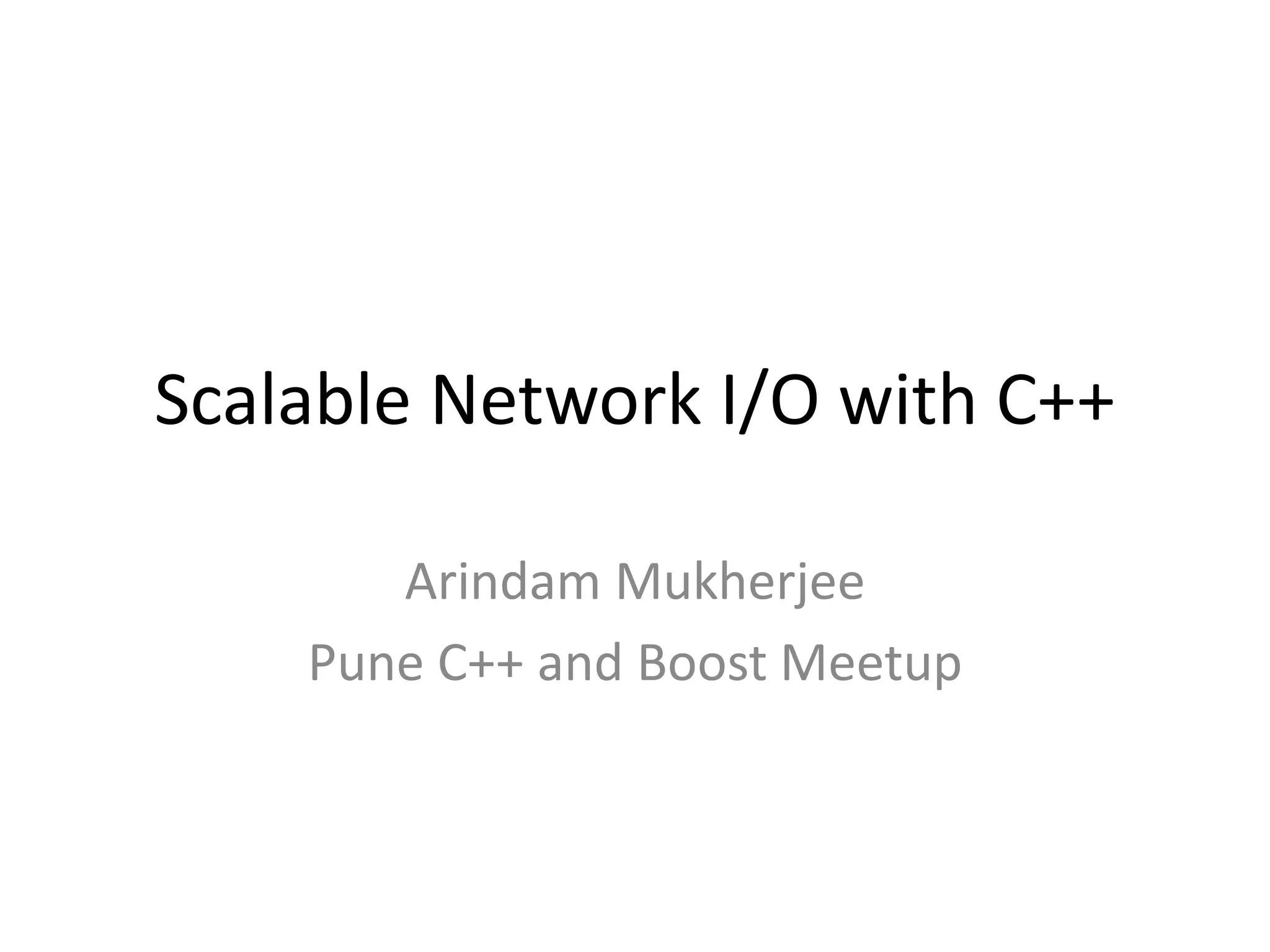
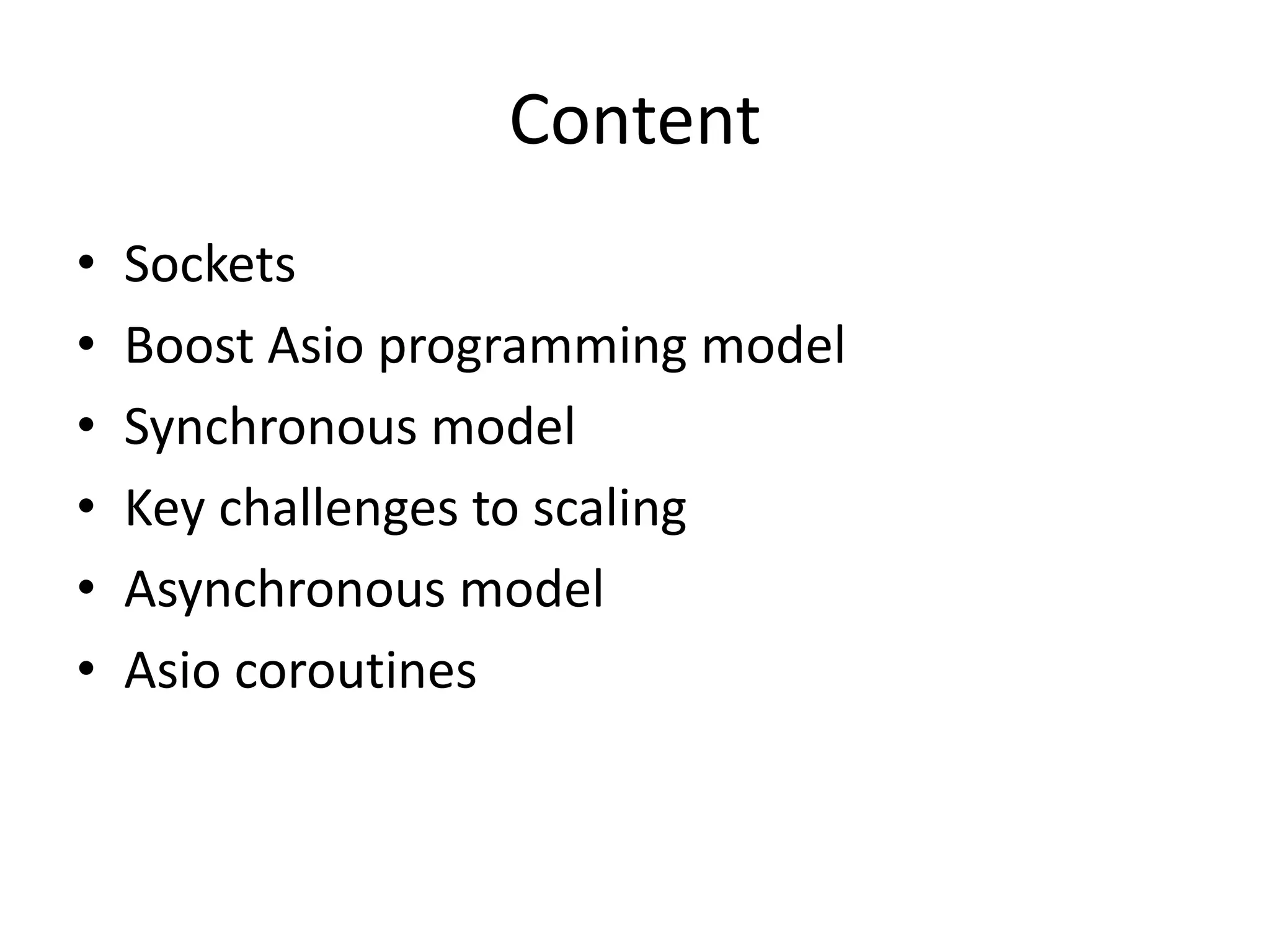
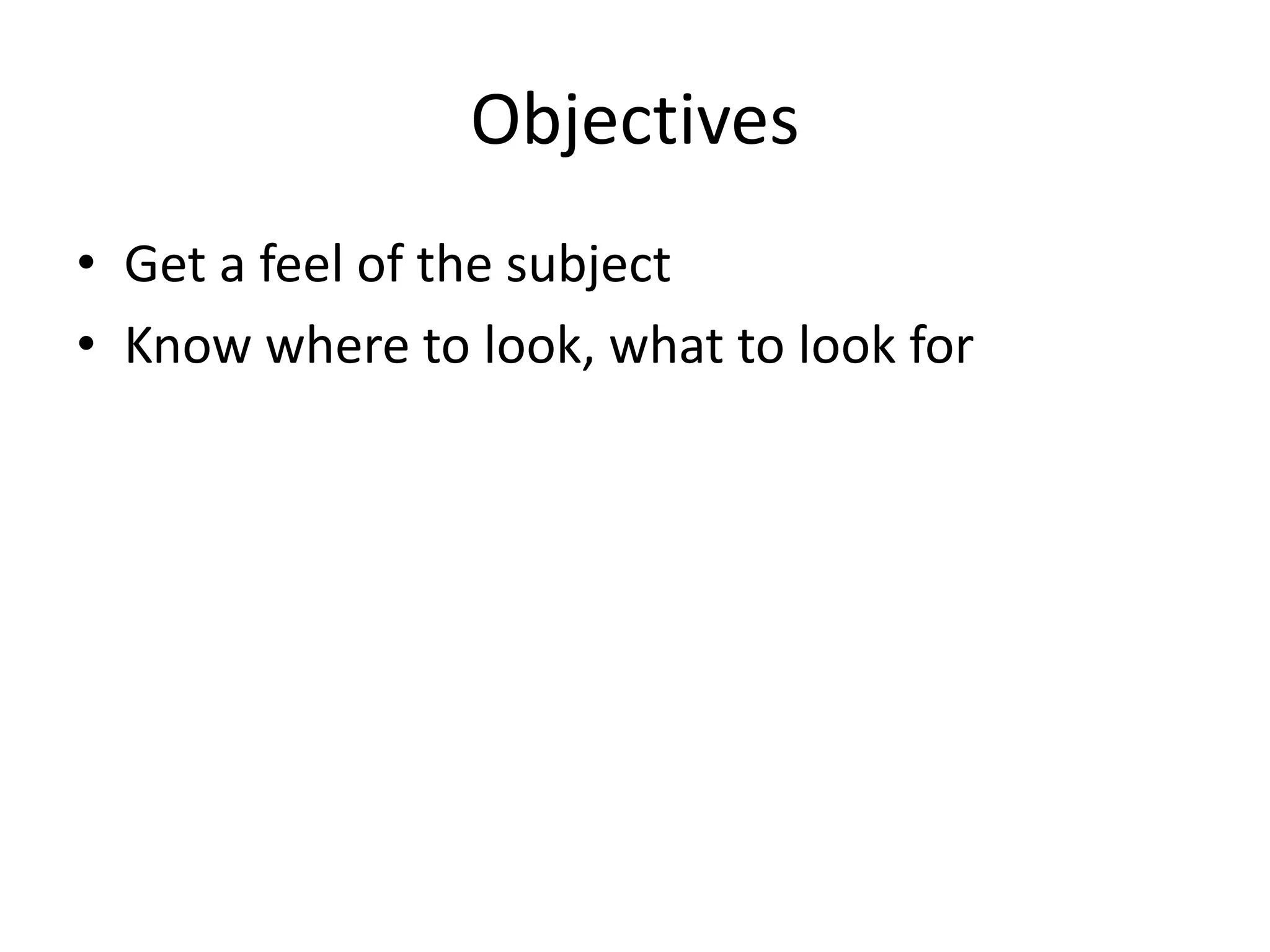
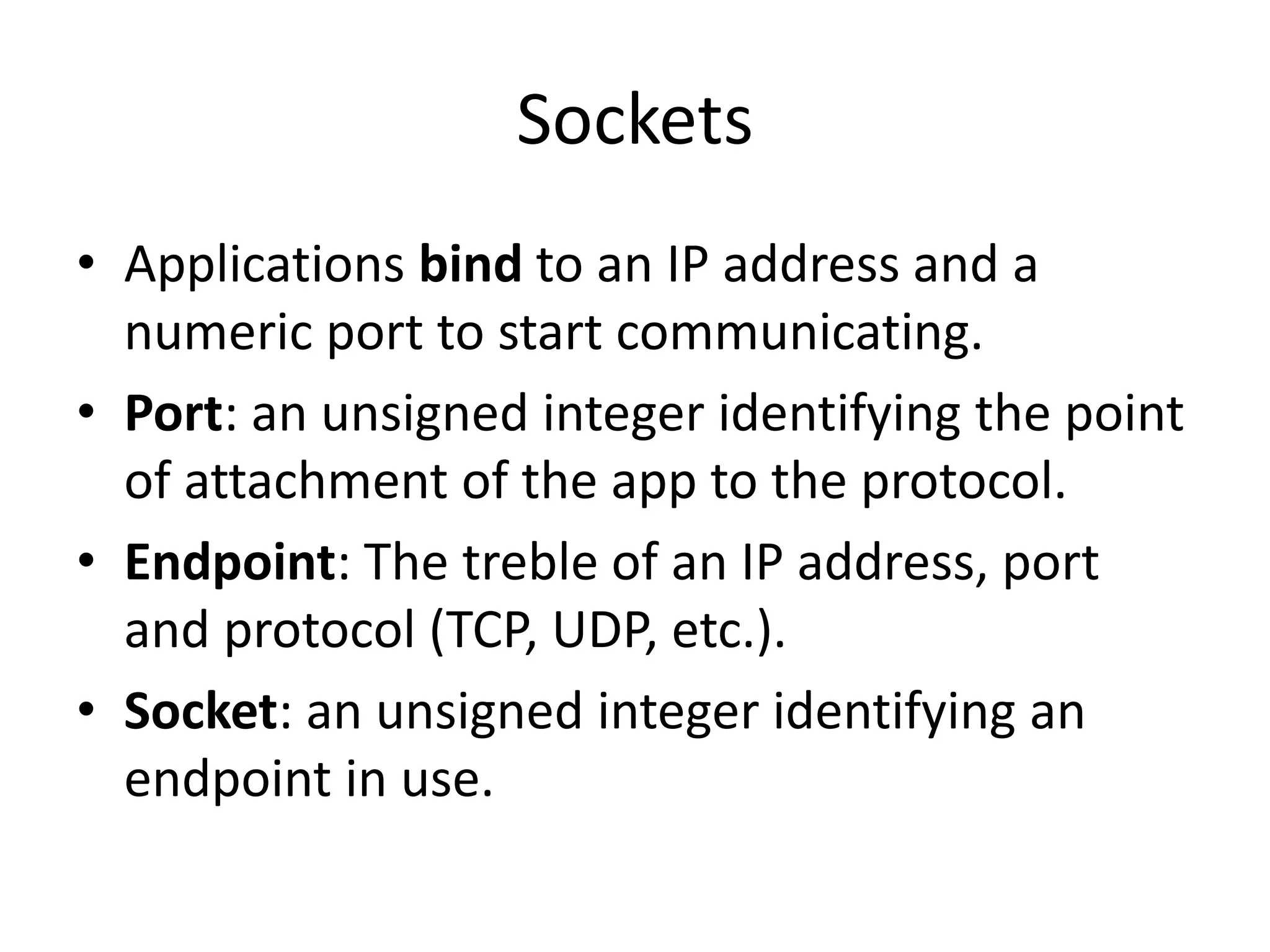
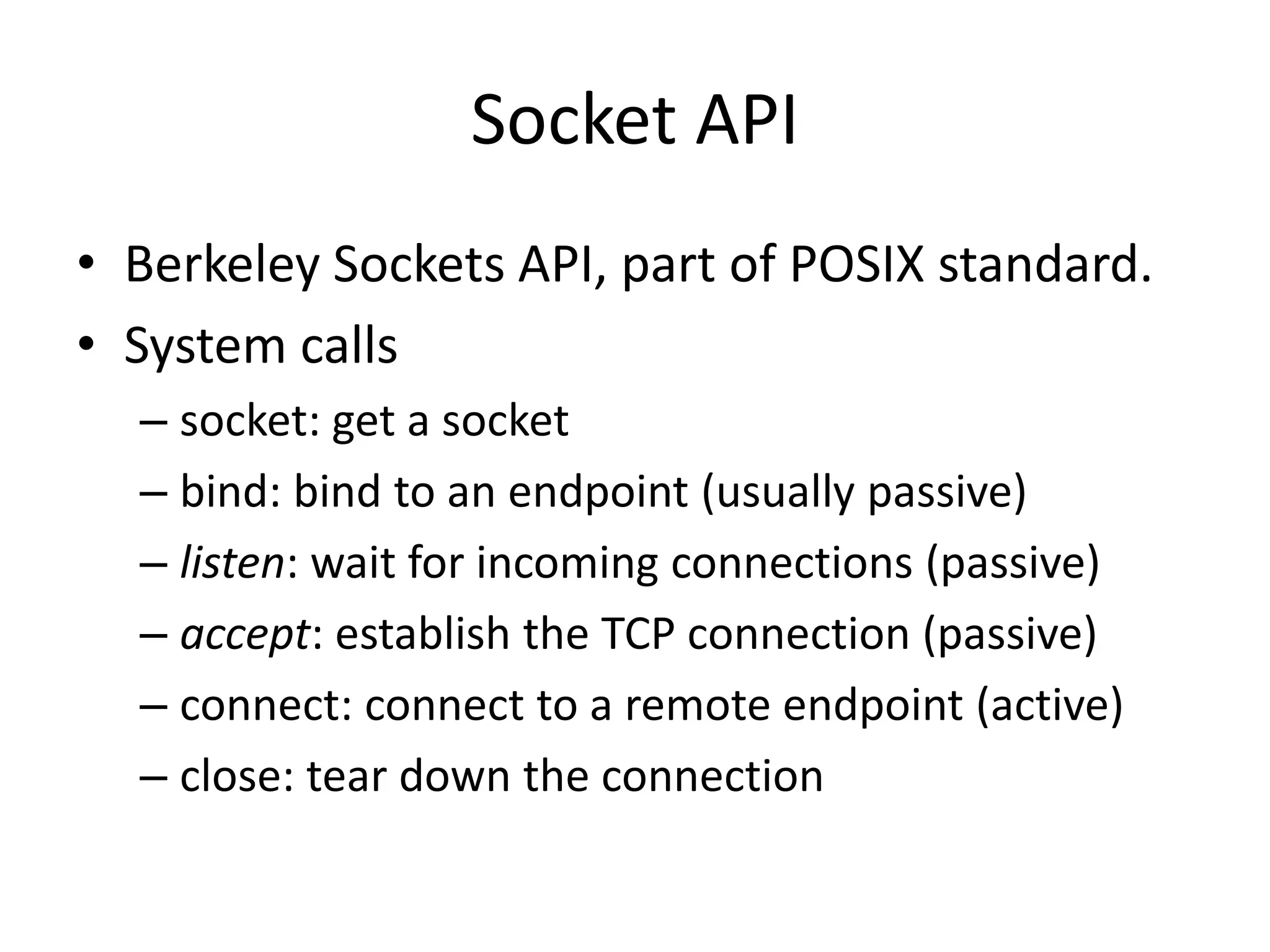
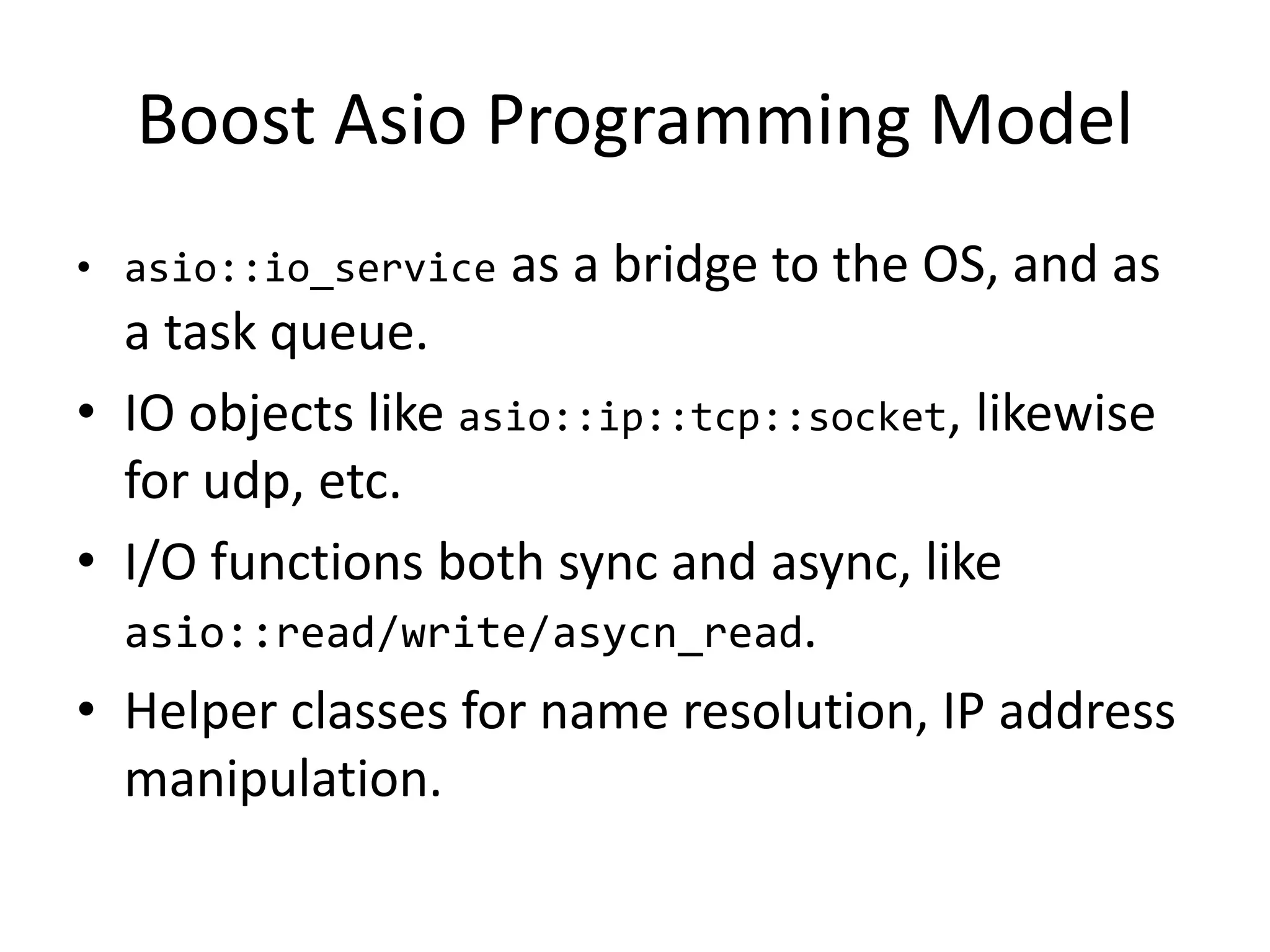
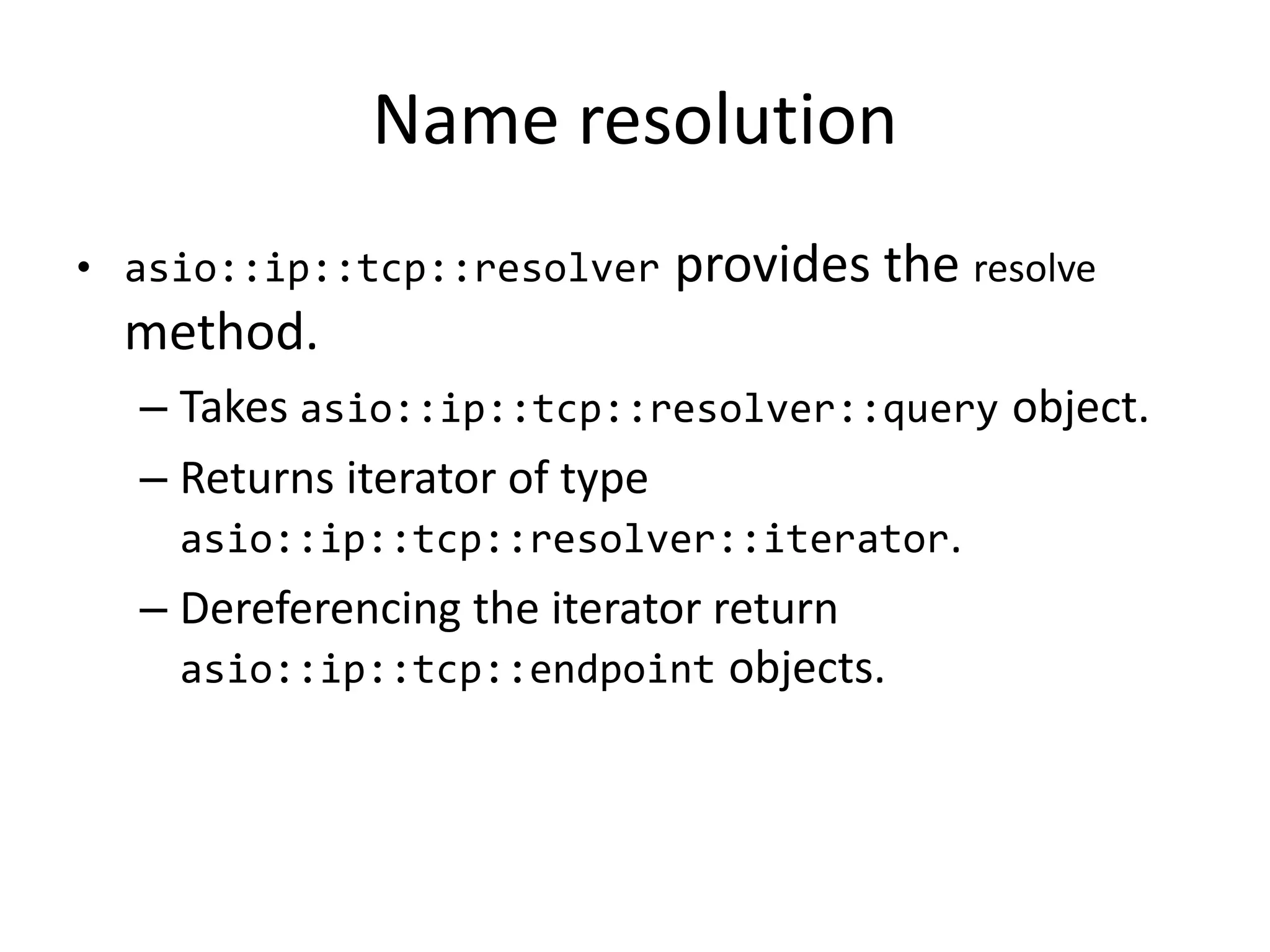
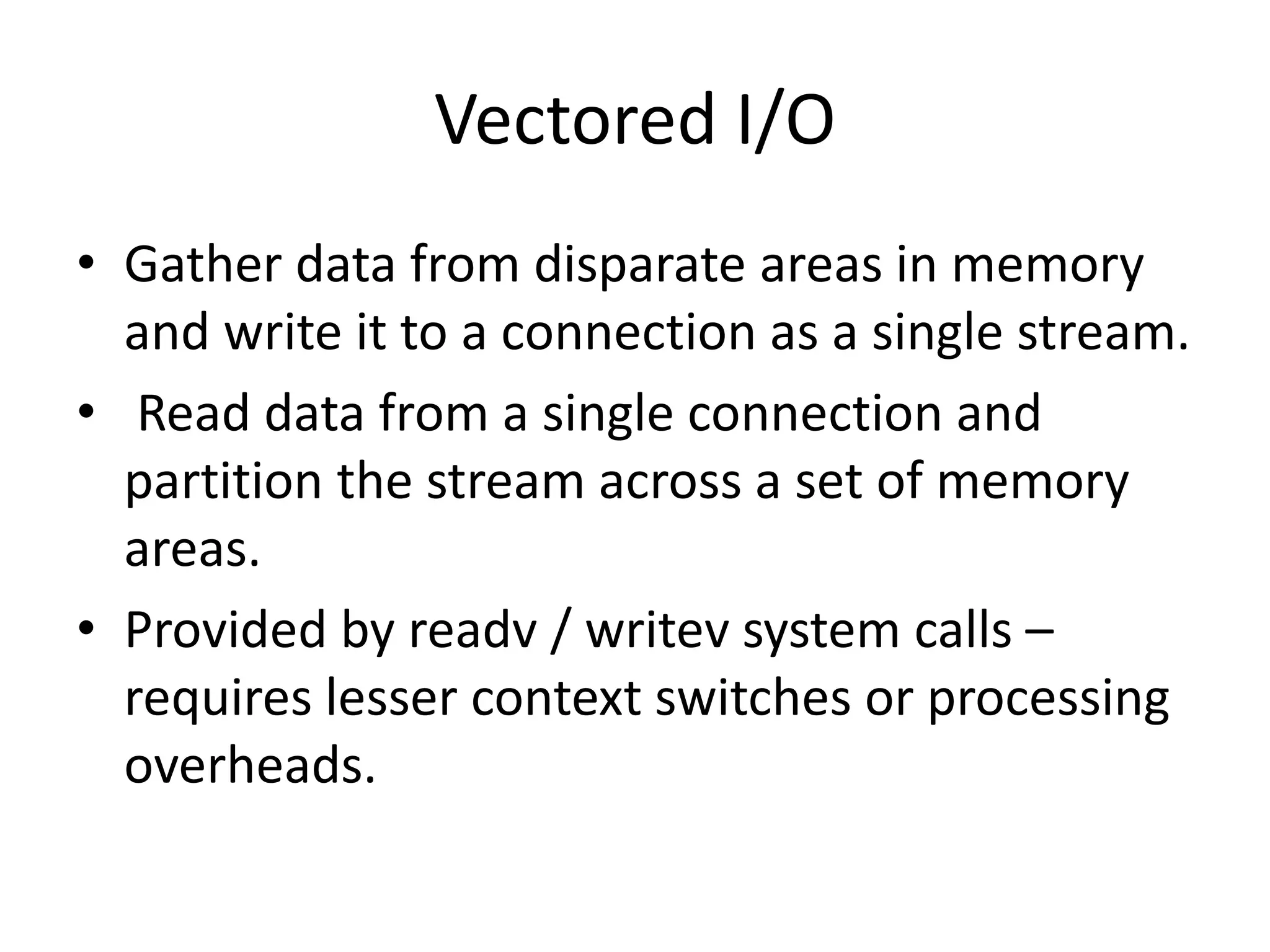
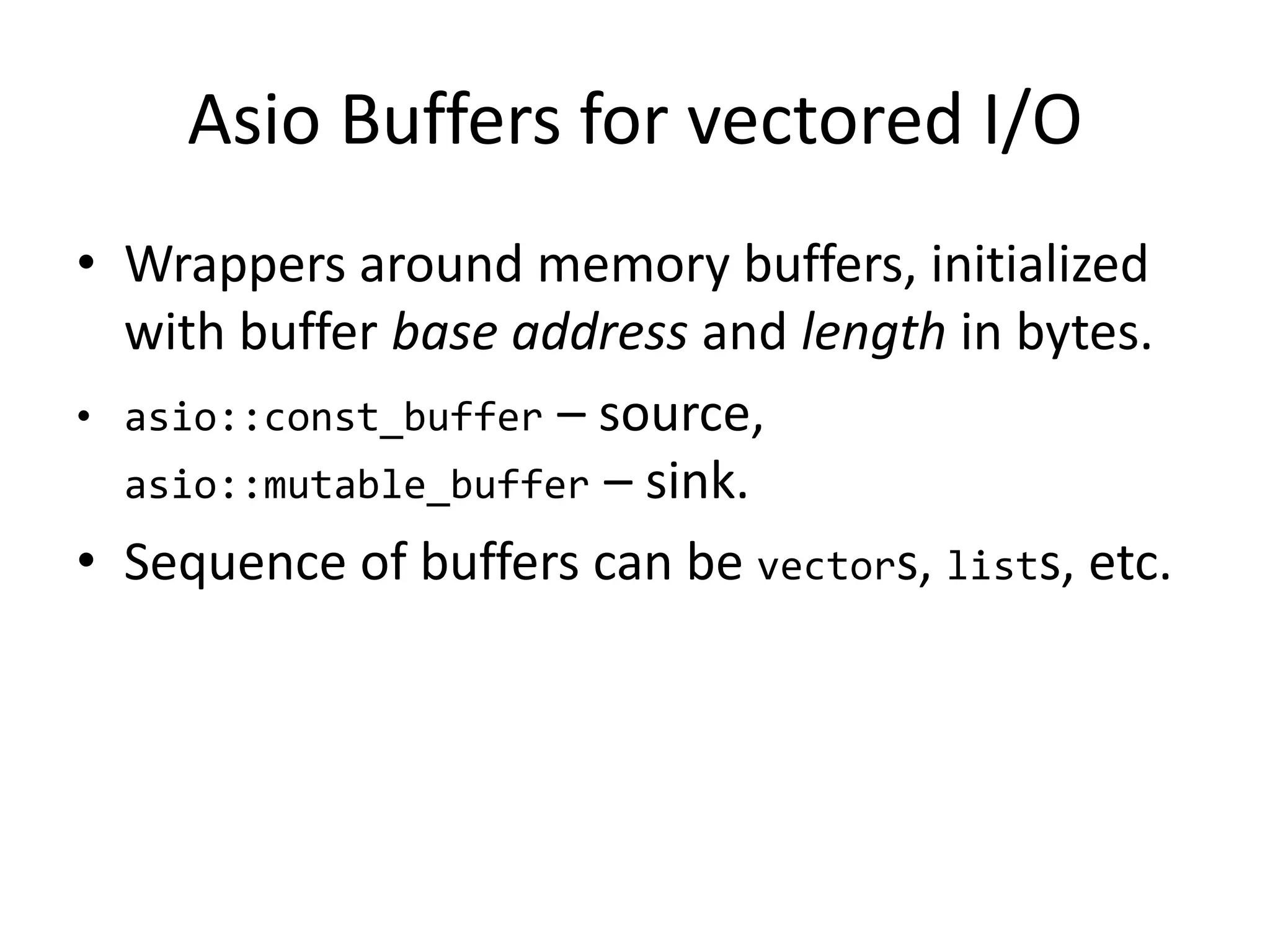
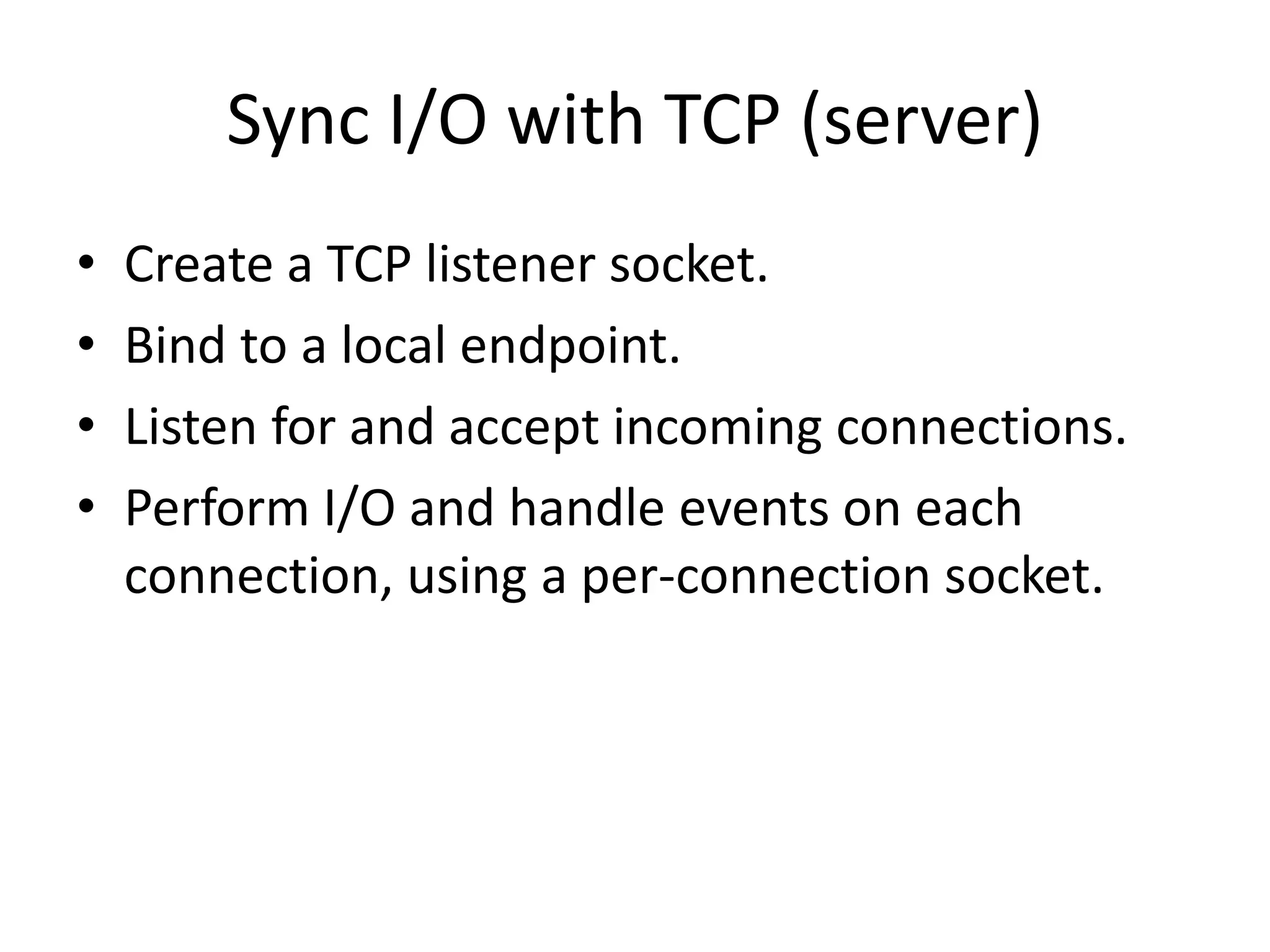
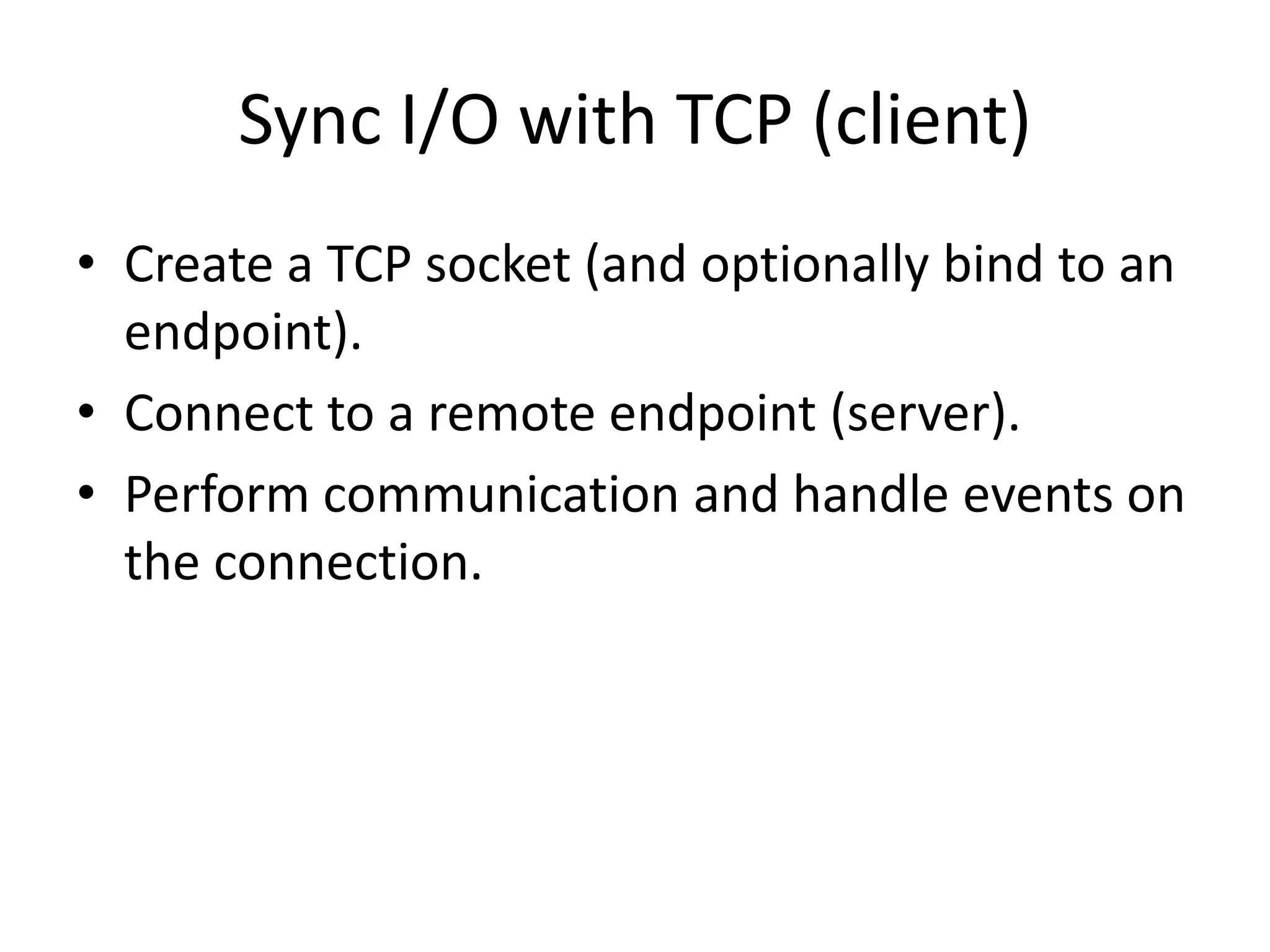

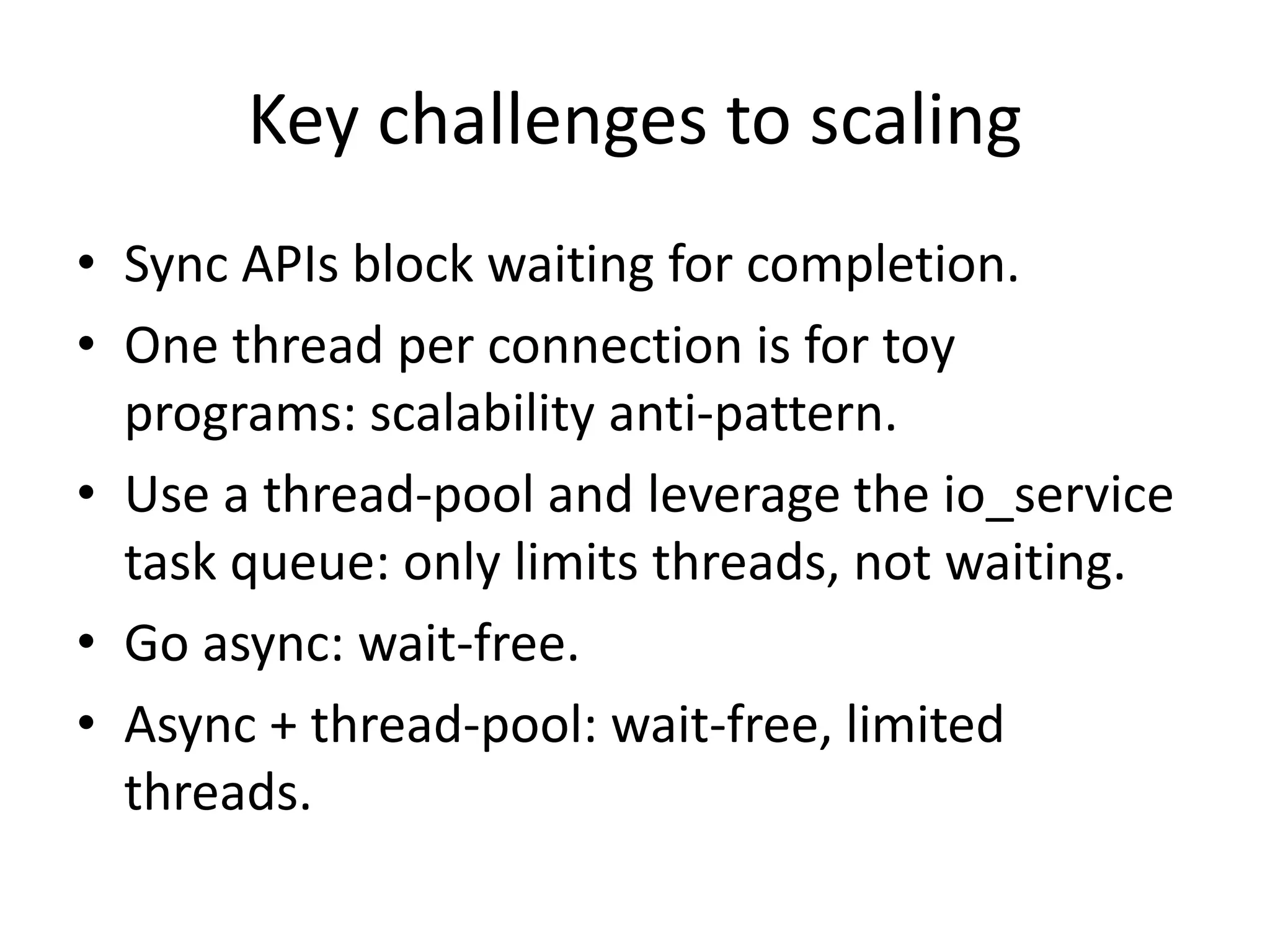
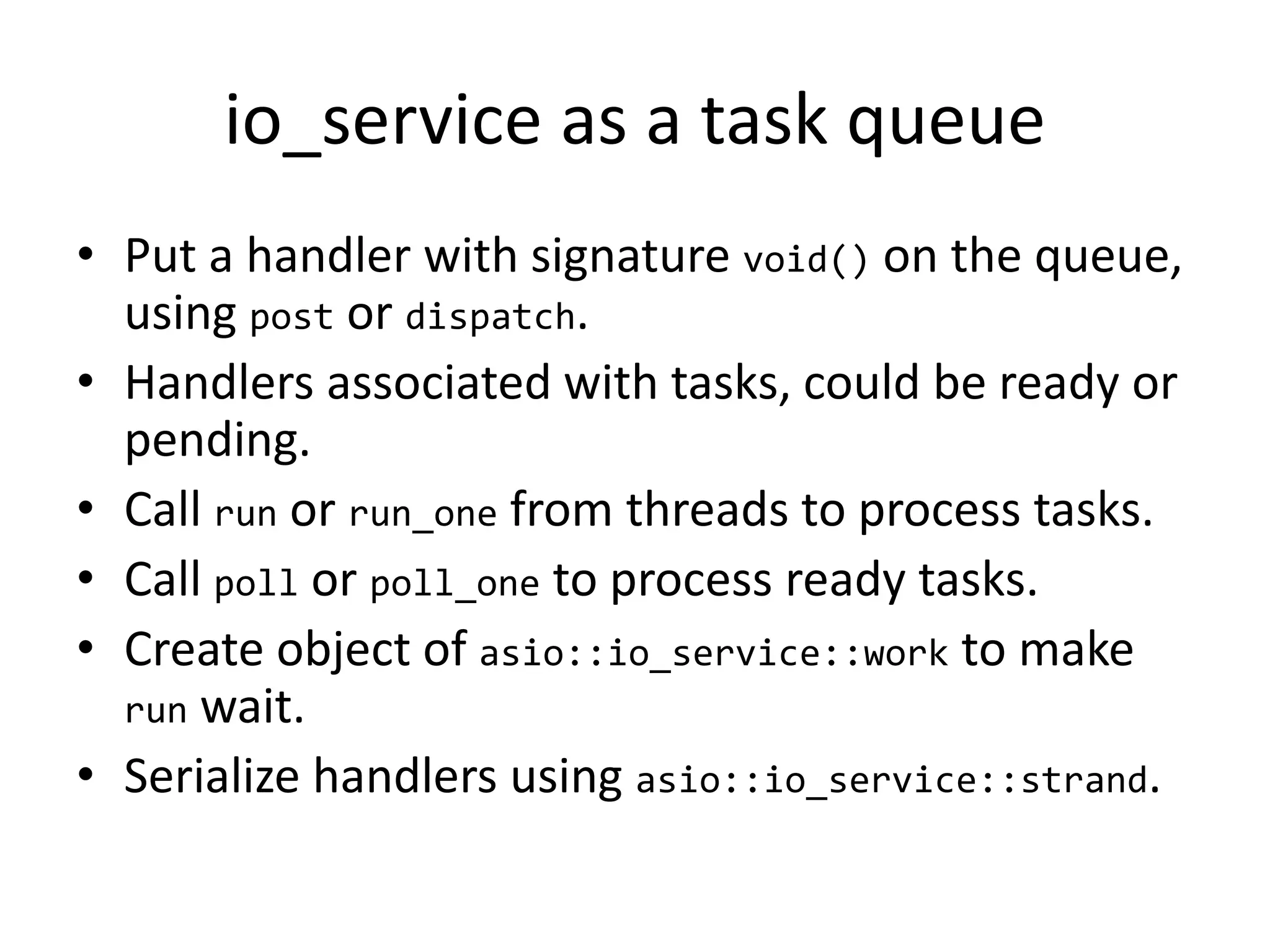
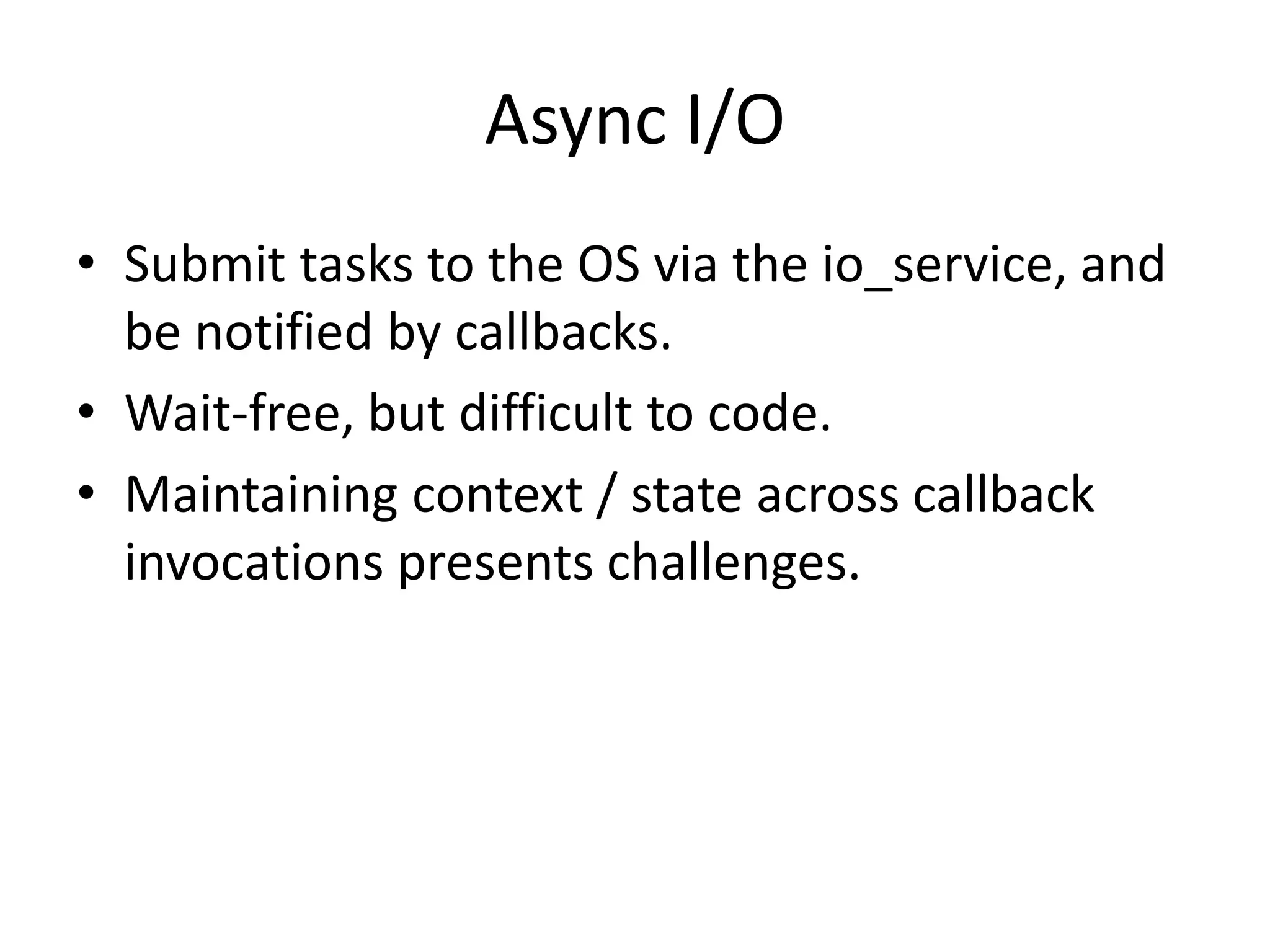
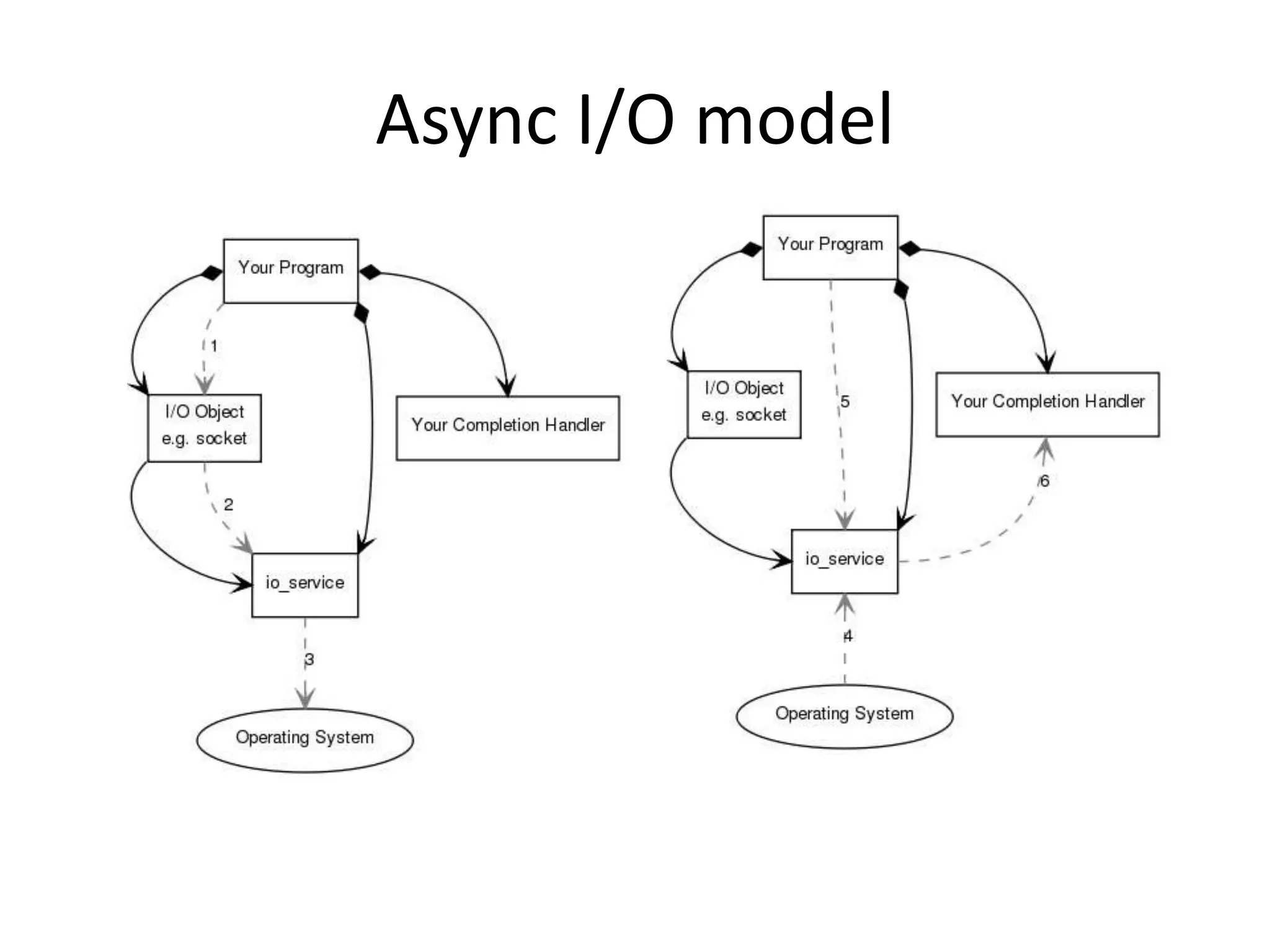
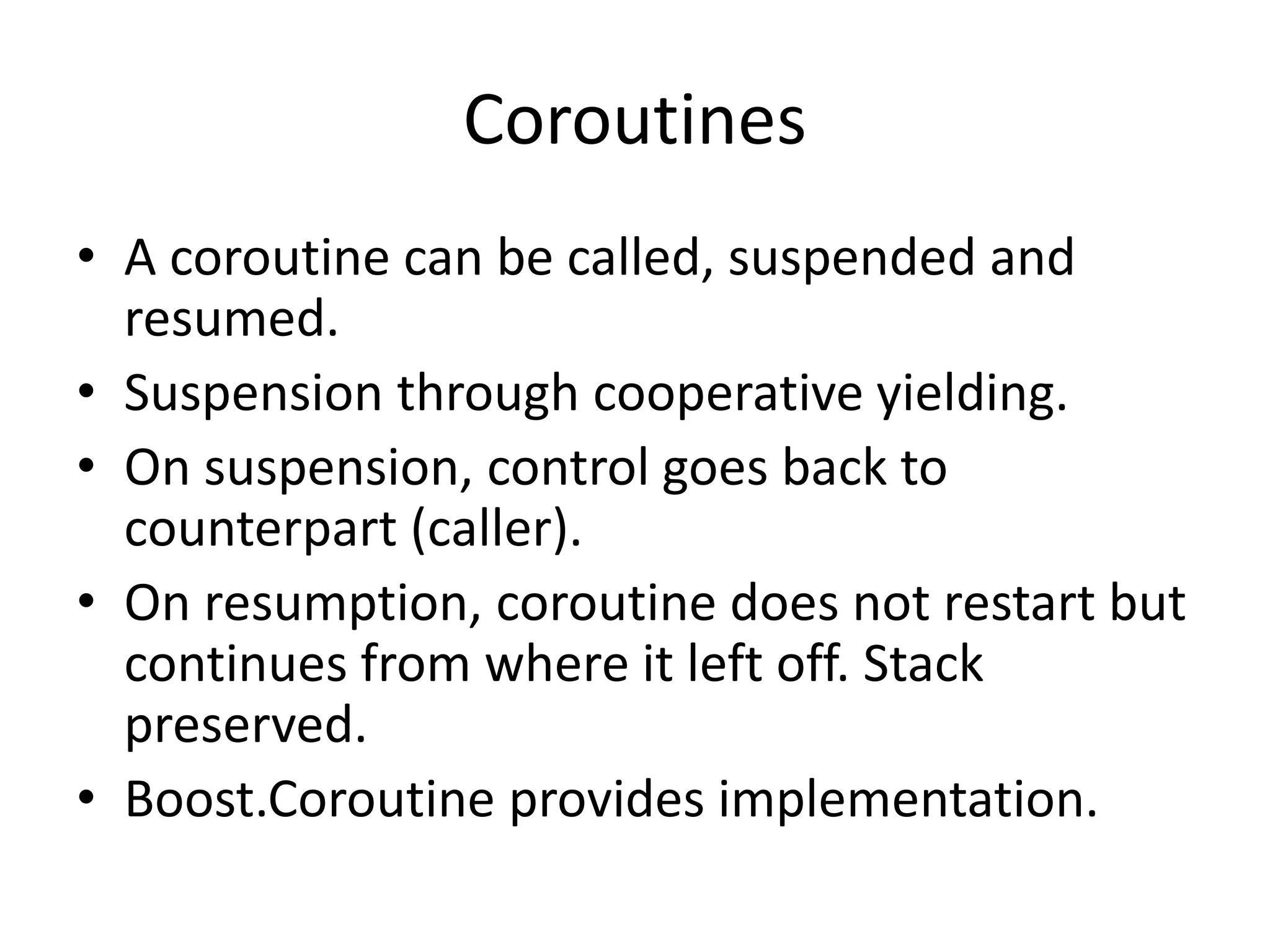
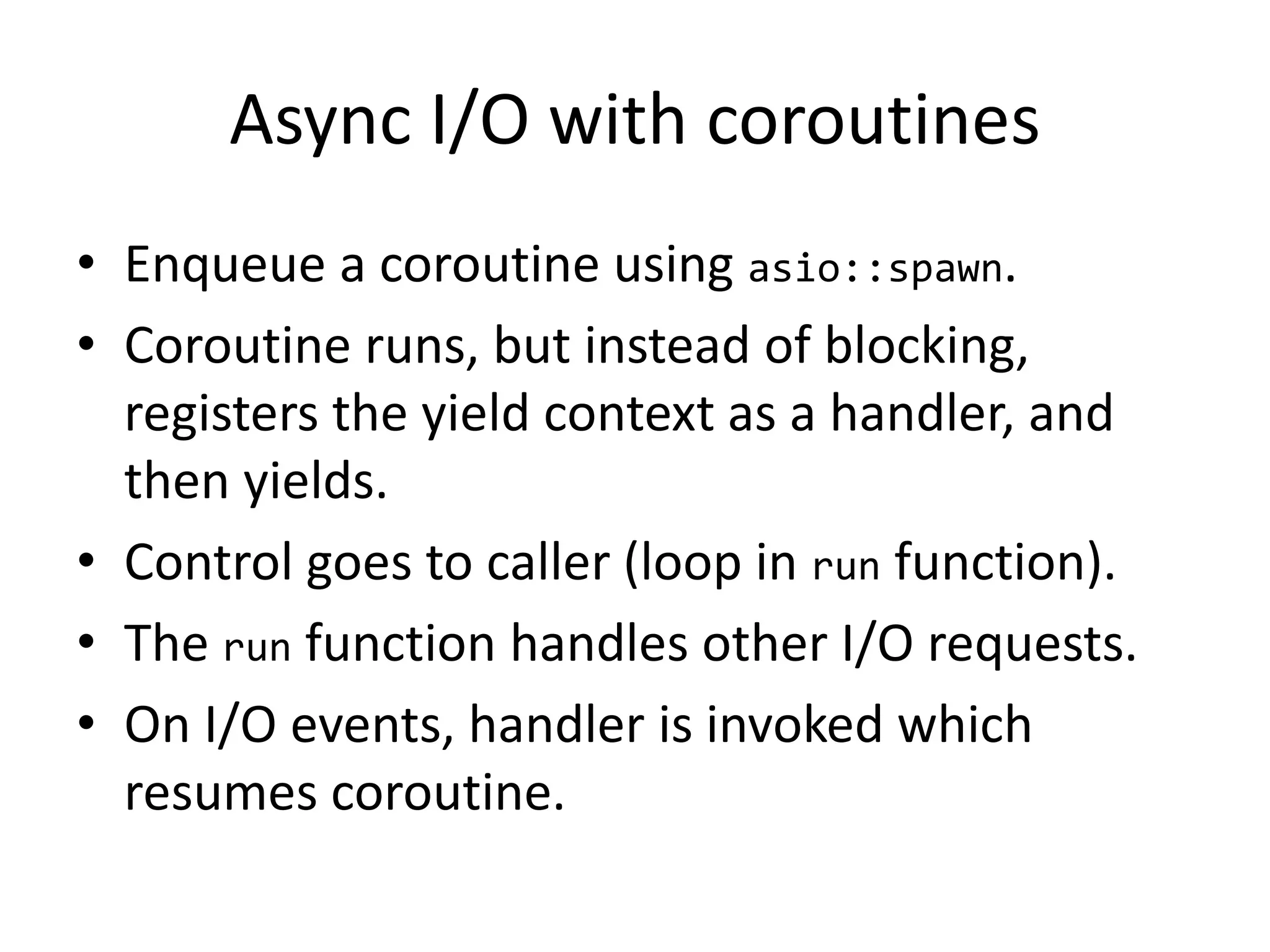
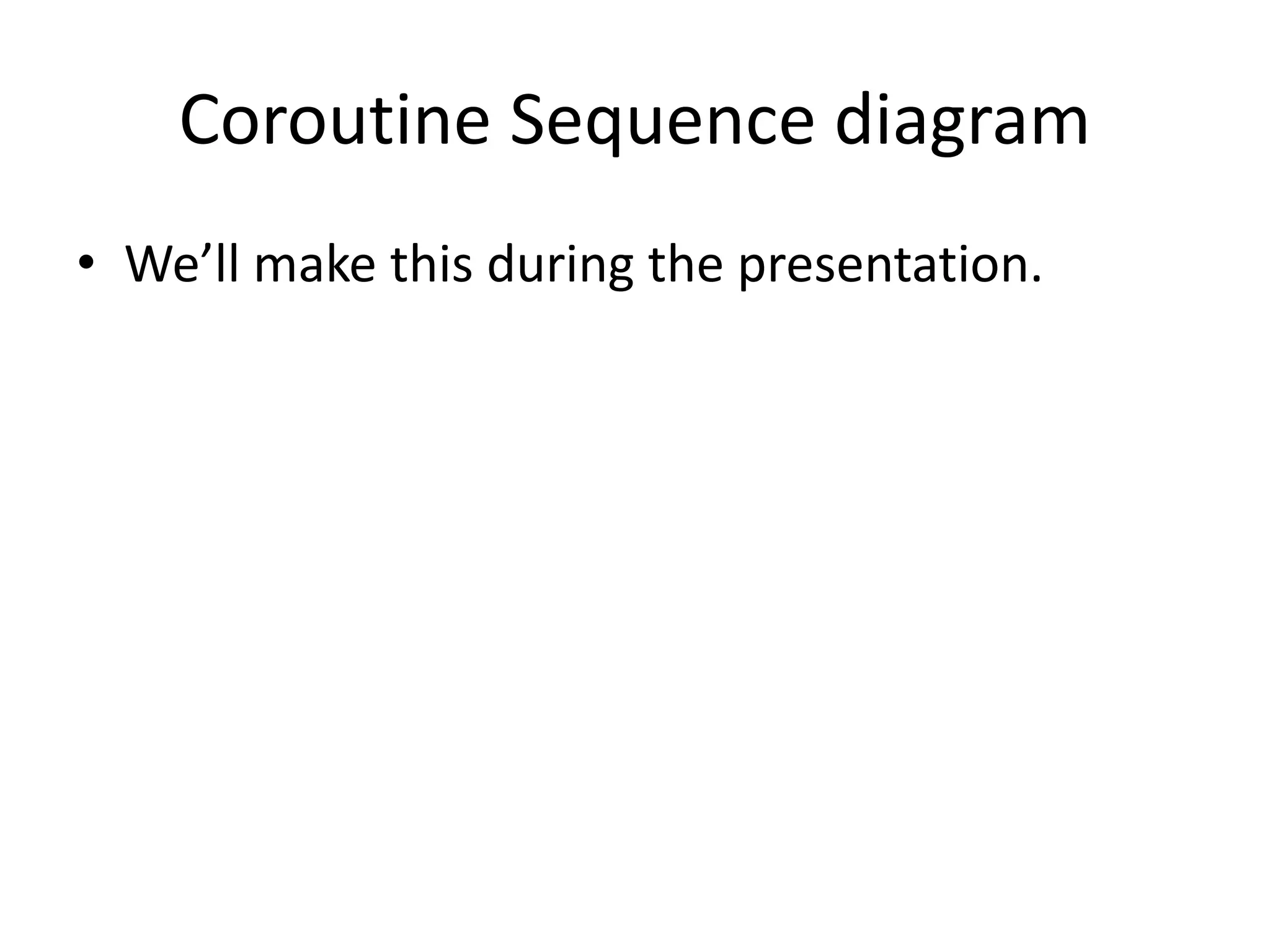

![Howto lambda
• Syntax for generating function objects inline:
[] { std::cout << "Hello, world!n"; }
• Can take args:
[](std::string name)
{ std::cout << "Hello, " + name + "!n"; }
• Can access vars from surrounding scope:
[&var1, var2](…) {
std::cout << var2 << 'n';
var1 = 10;}](https://image.slidesharecdn.com/cscalablenetworkio-150718072401-lva1-app6891/75/C-scalable-network_io-21-2048.jpg)
